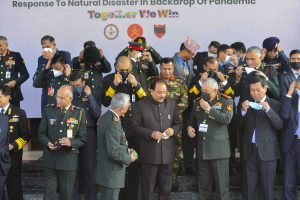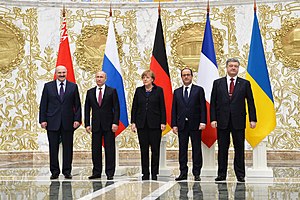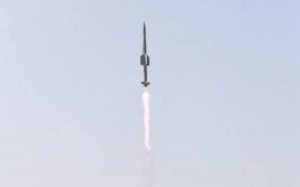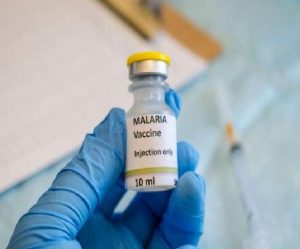Today Current Affairs: 9th December 2021 for UPSC IAS exams, State PSC exams, SSC CGL, State SSC, RRB, Railways, Banking Exam & IBPS, etc
Table of Contents
Additional Dose Of A Covid-19 Vaccine:

With the Omicron variant of Covid-19 spreading across the country, the need for a booster shot or an additional jab may feel more urgent than ever.
- An additional dose, originally called a third dose, is given to people with moderately or severely compromised immune systems to improve their response to the initial vaccine series.
- The term “third dose” was used to refer to additional doses for the two mRNA vaccines, but now the term is “additional dose” because those who received a Johnson & Johnson “one dose” vaccine may also be eligible for a dose based on their immune systems.
- People with weakened immune systems might not develop enough immunity after vaccination with two doses of a vaccine. An additional dose, thus, might improve their protection against the novel coronavirus.
- A booster shot is nothing but a means of strengthening one’s immune system against a particular pathogen. It may be exactly the same original vaccine, in which case its goal is to increase the magnitude of protection by producing more antibodies.
- The booster shot is an additional dose after the protection provided by the original shot(s) has started to decrease over time.
Swadeshi Microprocessor Challenge:

Ministry of Electronics and Information Technology felicitated the winners of the ‘Swadeshi Microprocessor Challenge – Innovate Solutions for #AatmaNirbhar Bharat’ during AzadiKa Digital Mahotsav celebrations.
- On August 18, 2020, the Indian Ministry of Electronics and Information Technology (MeitY)launched the “Swadeshi Microprocessor Challenge” as part of their series of proactive, pre-emptive and graded measures taken to spur the technology led innovation ecosystem in the country and staying at the forefront of digital adoption.
- Open to students at all levels and start-ups, the Challenge demanded contestants to tinker with the Swadeshi Processor IPs (VEGA processor by C-DAC & SHAKTI processor by IIT Madras) and facilitate them with innovating the frugal solutions for societal needs.
- Financial support to the tune of Rs. 4.40 Crore was provided at various stages of the Challenge for developing the hardware prototype and incubating a start-up to participating teams.
- The 1st Prize Winner of Swadeshi Microprocessor Challenge is Team- Vega-FCS-FT who used VEGA processor to demonstrate – Fault Tolerant Reliable Integrated Avionics System for Drones.
PANEX-21:

A Curtain Raiser Event for Humanitarian Assistance and Disaster Relief exercise, PANEX-21, for the member nations of BIMSTEC countries, was held in New Delhi on 07 December 2021.
- The exercise is planned to be conducted from 20-22 December 2021 at Pune and will witness participation from subject matter experts and delegates from India, Bangladesh, Nepal, Bhutan, Myanmar, Sri Lanka and Thailand.
- The success of the last two BIMSTEC Disaster Management Exercises (DMEx-2017 at Delhi and DMEx-2020 at Puri) speak of the close coordination mechanism that the BIMSTEC nations share.
MINSK Agreements:

The United States has warned Russia not to invade Ukraine and urged both countries to return to a set of agreements designed to end a separatist war by Russian-speakers in eastern Ukraine. Here is a look at the agreements, which were signed in Minsk in 2014 and 2015.
MINSK I:
- It was written in September 2014 by the Trilateral Contact Group on Ukraine, i.e. Ukraine, Russia, and the Organisation for Security and Co-operation in Europe (OSCE) with mediation by France and Germany in the so-called Normandy Format.
- Ukraine and the Russian-backed separatists agreed a 12-point ceasefire deal in the capital of Belarus in September 2014.
- Its provisions included prisoner exchanges, deliveries of humanitarian aid and the withdrawal of heavy weapons, five months into a conflict that by that point had killed more than 2,600 people – a toll that has risen to more than 14,000 now, according to the Ukrainian government.
- The agreement quickly broke down, with violations by both sides.
MINSK II:
- As the rebels moved further into Ukraine, in February 2015, representatives of Russia, Ukraine, the OSCE and the leaders of Donetsk and Luhansk signed a 13-point agreement , now known as the Minsk 2 accord.
- Representatives of Russia, Ukraine, the Organisation for Security and Cooperation in Europe (OSCE) and the leaders of two pro-Russian separatist regions signed a 13-point agreement in February 2015 in Minsk.
- The leaders of France, Germany, Russia and Ukraine gathered there at the same time and issued a declaration of support for the deal.
- The deal set out a series of military and political steps that remain unimplemented.
- It also had provisions related to acknowledgement of special status by parliament, pardon and amnesty for fighters, exchange of hostages and prisoners, humanitarian aid etc.
- However, these provisions have not been implemented because of what is popularly known as the ‘Minsk Conundrum’. This essentially means that Ukraine and Russia have contradictory interpretations about the agreement.
Short Range Surface To Air Missile: Vertical Launch:

The Defence Research and Development Organisation (DRDO) tested the “vertical launch-short range surface-to-air missile”, successfully.
- Missile was test fired from integrated test range in Chandipur, off the Odisha coast.
- Its launch was conducted from a vertical launcher towards an electronic target at a very low altitude.
- A number of instruments were used to track the flight path of the vehicle and its health parameters. These tracking instruments were deployed by ITR, Chandipur.
- The launch of short-range surface-to-air missile was conducted in a bid to validate integrated operation of all weapon system components such as canisterised flight vehicle, vertical launcher unit with controller, weapon control system etc., which are needed for future launches from Indian naval ships.
- The launch of this system will further boost the defence capability of Indian Naval Ships against aerial threats. It has also paved the way for integration of weapon systems onboard the Indian naval ships.
Vertical Launch – Short Range Surface to Air Missile (VL-SRSAM)
- VL-SRSAM is a quick reaction surface-to-air missile, that has been developed by DRDO.
- It comprises of features like mid-course inertial guidance through fibre-optic gyroscope as well as active radar homing during terminal phase.
- Missile has the capability of ‘lock on before launch (LOBL)’ and lock on after launch (LOAL).
- As a result, it receives mid-course update via datalink.
- It seeks to replace “Barak 1 surface to air missile system” onboard Indian Navy warships.
World Inequality Report 2022:

France-based World Inequality Lab published its report titled “World Inequality Report 2022”.
- This report was authored by Lucas Chancel, who is the co-director of World Inequality Lab.
- It was coordinated by famed French economist Thomas Piketty.
- Report notes that, top 1 % of the India’s population owns more than one-fifth of the total national income in 2021.
- The bottom half of the population earns just 13.1 per cent.
- It highlights that, economic reforms and liberalization that India has adopted, have mostly benefited the top 1 percent.
- Report identifies India as a poor and an unequal country, with an affluent elite.
- 1 percent richest people in India hold 22% of the total national income in 2021, while the top 10 % owns 57 per cent of the income.
- Average national income of the Indian adult population is Rs 204,200 in 2021, on the basis of purchasing power parity.
- However, report clarified that average national income of a country masks inequalities.
- The income gap between top 10 percent and bottom 50 percent in India is 1 to 22 in 2021.
- The report noted India as one of the most unequal countries worldwide.
World Malaria Report 2021:

The World Health Organisation (WHO) released its World Malaria Report 2021
- In the report, the WHO notes that ‘Global efforts to tackle malaria suffered because of novel coronavirus disease in 2020.
- Report further warned that, if proper action is not taken, the world will witness the danger of seeing an immediate resurgence of Malaria, particularly in Africa.
Deaths due to Malaria
- In 2020, there were an estimated 627,000 malaria deaths. The number of deaths increase by 12 per cent as compared to 2019.
- Around 47,000 (accounting for 68%) of the additional 69000 deaths were linked to disruptions in provision of malaria diagnosis, treatment and prevention amid the COVID-19 pandemic.
- 241 million malaria cases were reported in 85 malaria-endemic countries in 2020. This figure increased from 227 million in 2019.
- Most of the increase in number of cases were reported from countries in the WHO African Region.
- The WHO African Region accounted for around 95 percent of the cases. It accounted for 228 million malaria cases in 2020.
- Twenty-nine countries were responsible for 96 per cent of malaria cases across the world.
- Six countries namely Nigeria, the Democratic Republic of the Congo, Uganda, Mozambique, Angola and Burkina Faso accounted for around 55 per cent of all cases worldwide.
- India is responsible for 83 per cent of cases in WHO South-East Asia Region.
- Sri Lanka was certified malaria-free in the year 2016 and it remains malaria-free.
- Global progress against malaria had downgraded even before the covid-19 pandemic. Countries having high burden of the Malaria were losing ground. Since 2015, around 24 countries have registered increases in malaria mortality.




